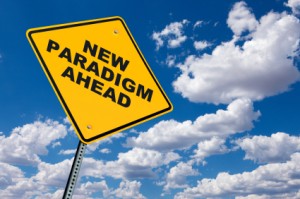 If you were born before 1990 you probably missed a paradigm shift.
If you were born before 1990 you probably missed a paradigm shift.
Unfortunately, that applies to quite a few of us – especially to those of us born between the Second World War and the 1992 Rio Earth Summit. Whether we like it or not, conspicuous consumption was embedded in our lives. We were raised in an era of abundance. Progress was signified by economic growth as measured by the GDP. Financial metrics ruled. ROI was measured by the single bottom line of profit.
That translated into disposable lifestyles with the latest toys and fashions, two-car garages and international travel. Now we are challenged to adjust to a new triple-bottom-line paradigm; one where ROI considers the cost of our lifestyles to the planet and to quality of life, not just at home but in countries far away. How do we reconfigure ourselves to live within the capacity of our shrinking planet? How do we embed sustainability into our lives?
The same dilemma applies to business.
As environmental constraints and social inequities increase with the growing population and globalization of our world, organizations are challenged to develop new business models. They seek to address these social and environmental risks and threats – and to capitalize on the opportunities they present. Many of the companies I work with – including sustainability and CSR leaders in their industries – are working to embed their social and environmental policies and commitments into their business operations. This typically involves re-engineering the way they do daily business, the way they identify and manage risks, and the way they plan for the long term.
Awareness of the need for change now infiltrates the highest echelons of organizations. Many companies now see the strategic advantage of developing a CSR or sustainability agenda. For instance, the Chief Financial Officer is predicted to be the future champion of sustainability.
But the path forward is not always clear. What are the implications for purchasing, for HR managers, for planners, product development, sales and operations? Whether in the C-suite or on the shop floor, what are the new role expectations? This lack of certainty creates inertia in some, while for others it is the innovation frontier. With a proven CSR business case – it is now up to managers to capitalize on the opportunities ahead.
I find that organizations now look for tools and guidance to advance this agenda to embed sustainability. They want tools that address the role of the board, strategy, accountability and performance management systems, stakeholder engagement, and finally, monitoring and reporting. Some turn to the ISO standards such as 14001 or 26000 for guidance, or to the Global Reporting Initiative for an ESG framework, methodology and metrics. Some may look to their industry associations for support in developing an industry protocol for good sustainability practice. And others turn to ENGOs, or other non-governmental organizations, for insights into good social and environmental performance management.
This need for guidance is why Credit Union Central of Canada asked me to develop a practical approach for member credit unions to embed CSR or sustainability factors from their boards to their branches. This tool, “Governance and Management for Credit Union Social Responsibility” is generally applicable to most sectors, so if you are looking for some help in this area, you might want to check it out. A companion document, “CSR Governance Guidelines”, which I co-produced with Canadian Business for Social Responsibility, is very useful if your board of directors is grappling with these issues, as many are starting to do now that CSR has become a business issue.
So, as we face these issues in both our business and our personal lives, let’s hope that we all make the shift, sooner than later, to conspicuous non-consumption.


